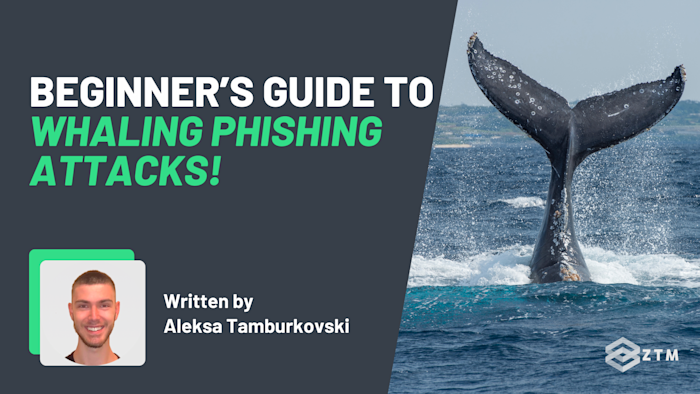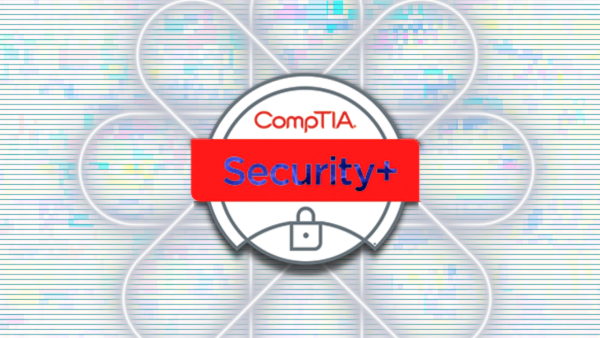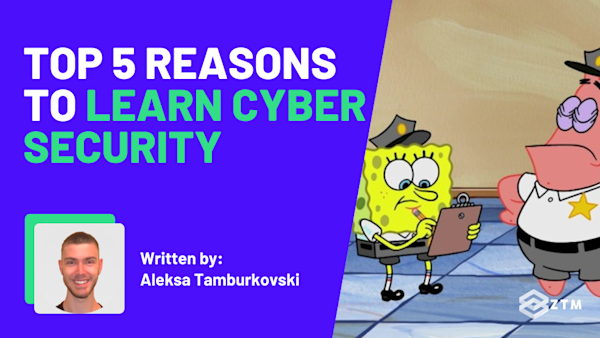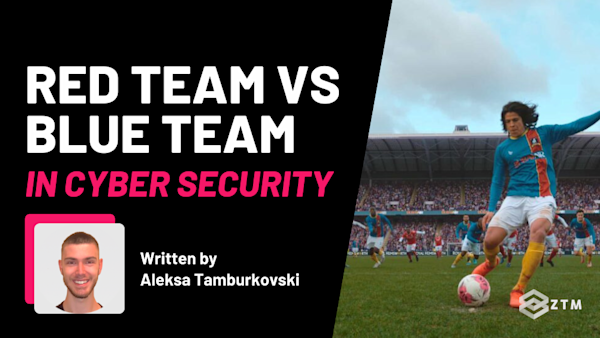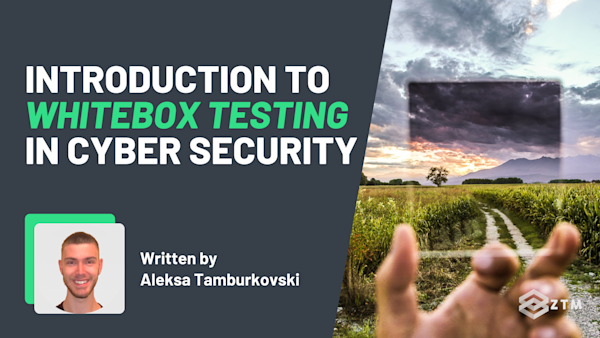Phishing attacks are nothing new. In fact, you’ve probably seen those sketchy emails trying to steal your passwords or get you to click on a shady link. Maybe it’s why your Grandma’s Facebook keeps getting hacked.
But some attacks go far beyond tricking people out of their social media logins. Imagine a cyberattack so calculated, so tailored, it’s designed to hit the most powerful people in your company - executives who hold the keys to sensitive data and major financial decisions.
These attacks aren’t just sneaky, they’re devastating, and they’re happening more often than you’d think.
So what makes these high-stakes scams so dangerous? And more importantly, how can you stop them? That’s exactly what we’ll uncover in this guide.
Let’s get started.
Sidenote: If you want to improve your cybersecurity and make sure your company isn’t affected by phishing attacks (or worse), check out any of my courses - starting with the complete CyberSecurity Bootcamp!
Updated for 2025, this is the most comprehensive Cyber Security Bootcamp that you can find - all while being completely beginner friendly!
You’ll not only be able to secure your own systems - but you'll learn enough to be hired as a cyber security professional!
With that out of the way, let’s get into this guide.
What are whaling phishing attacks?
Think of whaling phishing attacks as phishing scams on steroids. Instead of targeting everyday employees, they go straight for the top—the CEO, CFO, or other senior decision-makers in a company.
Why? Because these are the people with the authority to approve big decisions, access sensitive data, or move large sums of money.
The term “whaling” fits because the attackers are hunting the biggest “fish” in the organization, and falling for just one of these attacks can cause devastating damage such as financial losses, leaked data, and a tarnished reputation - or usually a combination of all three.
For example
In June 2015, Ubiquiti Networks, a U.S. based technology company, fell victim to a whaling attack resulting in a loss of $46.7 million.

Attackers impersonated company executives and targeted employees responsible for financial transactions, convincing them to transfer $46.7 million to overseas accounts controlled by the fraudsters…
So as you can see, this is serious stuff. However, knowing what whaling phishing attacks are is just the start. Understanding how they unfold step by step can help reveal why they’re so effective.
Spoiler alert. It’s because they put in some serious hard work...
How whaling phishing attacks work
Like I said earlier, whaling phishing attacks are the result of careful planning and precise execution. They’re designed to exploit trust, urgency, and authority, making them far more effective than your typical phishing scam.
Here’s how these attacks typically unfold, step by step:
Step #1. Researching the target
Every successful whaling attack begins with research. And we’re not talking about a quick Google search - attackers dig deep. They scour LinkedIn profiles, social media, press releases, company websites, and even leaked databases. The goal is to build a detailed profile of their victim, including:
- Their job responsibilities
- Their habits and communication style
- Their relationships, both professional and personal
For instance, an attacker might discover that the CFO is working on a big acquisition deal or that a CEO recently attended an industry conference.
Armed with this information, they can craft a message that feels timely, relevant, and legitimate. Because in your mind, how would anyone outside the company know these details right?
Step #2. Crafting the attack
Once the attacker knows enough about their victim, they create the bait which is usually an email. These messages are also carefully tailored to the individual that’s receiving them, making them nearly indistinguishable from legitimate communications.
Attackers use two common strategies:
- Direct targeting: They impersonate someone the victim trusts, like a vendor, partner, or colleague. The email might request a wire transfer or ask for sensitive information under the guise of a routine task
- Impersonating the executive: Here, the attacker poses as a high-ranking leader, such as the CEO or CFO, and contacts someone lower in the hierarchy, like a finance manager. The email might include an urgent demand, leveraging the executive’s perceived authority to override doubt
To make these emails even more convincing, attackers often use email spoofing, so that their email seems to resemble the domain level email of the person.
Step #3. Triggering a response
The real trick of a whaling attack lies in creating a sense of urgency, simply because these attackers know that urgency can cloud judgment, so their emails often include language like:
- “This deal is time-sensitive and must be approved immediately”
- “Failure to act now could result in significant legal penalties”
By creating this pressure, attackers manipulate their victim into bypassing standard verification procedures. The victim feels they must act quickly to avoid consequences, which can lead to costly mistakes.
If they can tie that in with a seemingly correct email that matches details about a current campaign, then it’s very easy for them to trick people.
Step #4. Exploitation or exfiltration
When the victim complies, the attacker achieves their immediate goal, but the damage might not stop there.
Attackers could:
- Steal money directly: Funds are transferred to fraudulent accounts, often through hard-to-reverse wire transfers
- Extract sensitive files: Confidential contracts, employee records, or other valuable data are downloaded for immediate or later use
- Gain persistent access: Attackers may infiltrate proprietary systems, installing backdoors or leaving credentials compromised. This allows them to lie in wait, collecting data or preparing for a larger theft or sabotage down the line
This long-term access makes whaling attacks even more dangerous, as it extends the window for harm. Instead of a single blow, the attacker could exploit the access months later, stealing additional information or escalating the attack.
Step #5. Covering their tracks
Then, once the attack is complete, the attackers don’t stick around. They’re usually meticulous in covering their tracks, using methods like:
- Disposable domains that vanish after the attack
- Encrypted communication tools to avoid detection
- Emails that self-destruct after a set period
All of these tactics make it nearly impossible to trace the fraud back to its source, leaving victims struggling to recover stolen assets or identify the perpetrators.
Once it’s gone it's gone 😢.
Let’s make sure this doesn’t happen to you though, and walk you through how to identify, protect, and respond to these attacks.
How to identify whaling phishing attacks
The first step to stopping a whaling attack is knowing what to look for. These scams are subtle, but there are telltale signs:
Always double check email addresses
Whaling attacks rely on email spoofing, where the sender’s address is made to look legitimate.
For example
john.doe@company.com could be faked as john.doe@companv.com, swapping the “y” for a “v”, which is easy to miss if you’re in a hurry.
If in doubt, make sure to hover over the sender’s name to inspect the email address. If it doesn’t match exactly, that’s your first red flag.
Check the tone and communication style
Does the email sound like it’s coming from the person it claims to be?
If your typically casual CEO suddenly starts writing in formal, overly detailed language, something’s off. Attackers struggle to mimic natural writing styles, so keep an eye out for inconsistencies.
Be aware of requests for urgent or confidential action
Whaling emails often push you to act quickly, bypassing your usual judgment. Phrases like “This must be handled immediately” or “Keep this strictly confidential” are red flags. They’re designed to create pressure, making you feel like questioning the request could cause problems.
In fact, my first thing to do in this situation is to immediately mouse over the email to check because it stands out so much.
Irregular requests that bypass normal procedures
If you’re being asked to skip standard protocols—like transferring money without approval or sharing sensitive files without documentation—it’s time to pause and double-check.
Legitimate requests should always follow established company processes!
Make sure to check EVERY links or attachment
Hover over links before clicking to verify where they’ll take you. If the URL looks off or doesn’t match the email’s context, it’s likely malicious. Similarly, be cautious with unexpected attachments—they could carry malware.
Spotting an attack is crucial, but true protection comes from putting robust defenses in place
How to protect against whaling phishing attacks
Stopping a whaling attack before it starts requires a mix of training, strong policies, and advanced security tools. Here’s how you can protect yourself and your organization:
Foster a culture of vigilance
Encourage employees to question unusual requests, even if they appear to come from senior leaders. Make it clear that no one will be penalized for verifying an urgent request. A quick confirmation call can save your company millions.
Train employees regularly
Education is your best defense against almost all attacks. So make sure to conduct regular training sessions to teach employees how to recognize phishing tactics, including whaling.
Use real-world examples to show how these attacks work, and test readiness with simulated phishing campaigns and red team security testing events.
Implement strict verification protocols
Every sensitive action—like wire transfers or sharing confidential files—should require extra verification.
For example:
- Always confirm high-value transactions with a verbal or in-person check
- Use multi-step approval processes, involving multiple team members for financial actions
These steps create barriers that make it harder for attackers to succeed.
Use multi-factor authentication (MFA)
MFA adds an extra layer of security by requiring more than just a password to access accounts.
For example
After entering your password, you might also need a one-time code sent to your phone. Even if an attacker steals your credentials, MFA can block unauthorized access.
Google offers these for free and most tools will connect to them.
Strengthen email authentication
Deploy tools like:
- DMARC (Domain-based Message Authentication, Reporting, and Conformance): This verifies that emails are always sent from your company’s domain
- SPF (Sender Policy Framework): This stops attackers from using your domain to send spoofed emails
- DKIM (DomainKeys Identified Mail): Ensures the content of an email hasn’t been tampered with during transit.
These technologies make it significantly harder for attackers to impersonate your organization.
Invest in advanced email filtering
Modern email security tools can automatically detect phishing attempts, flag spoofed domains, and block suspicious messages. So ensure your organization uses a filtering system that stays updated against the latest threats.
Don’t use a $20 tool that could cost you millions in hacked access!
If you follow these tips, you should be much more secure. However, even the best systems can be hacked, so let’s cover what to do if you think this has happened.
How to respond if you suspect an attack
Let’s say that you suddenly get an email from your boss talking about a new deal, and he needs an invoice paid ASAP.
The information is right but the tone is off so your ‘hacker senses’ start tingling and you think something might be wrong.
- First of all, don’t engage with the suspicious email. Avoid replying, clicking on links, or opening attachments, as these actions can give attackers more information or activate malicious software
- Instead, verify the sender’s identity through a trusted channel, like a known phone number or an official email address—not the contact details provided in the email itself
- Once you’ve confirmed that something is wrong, report the incident to your IT or security team immediately
- If you suspect credentials have been compromised, secure affected accounts by changing passwords and enabling MFA. IT teams should also monitor access logs for any unauthorized activity
- Finally, significant incidents should be reported to cybersecurity authorities, like the FBI’s Internet Crime Complaint Center (IC3) in the U.S. Timely reporting not only helps your organization but can also alert others to emerging threats. Ideally you should have an incident response plan in place
After handling the immediate threat, review the incident to identify gaps in your current defenses. This post-mortem analysis is a valuable opportunity to refine your policies and strengthen your organization’s response to future attacks.
Always learn from your mistakes. They’re the most valuable lessons.
Time to stay one step ahead of Whaling Phishing attacks
Although we often think of hackers getting in via code, the reality is that social engineering is much easier for them.
All it takes is one slip up and your company can not only lose money, but also customers and even accrue huge fines. This is why you really can’t be lazy when it comes to cybersecurity and training yourself and your team.
Take the first step and protect your organization today.
P.S.
Just a heads up but if you decide to join Zero To Mastery as a member, you get access to ALL of my cybersecurity courses and more.
Every tech course on the platform is available, as well as access to our private Discord server.
Here you can chat to me, other students, and working cybersecurity professionals and get help with any questions you might have 24/7.
It’s the best investment you can make to improve your cybersecurity in 2025.
Want more Cyber Security content?
If you enjoyed this post, then check out my other guides and tutorials!
- Active vs. Passive Reconnaissance in Cyber Security
- Beginner’s Guide to CNAP in Cyber Security
- Introduction to Whitebox Testing in Cyber Security
- A Beginners Guide To Computer Networking
- SOC Analysts: What Are They And How Do You Become One?
- How to Become an Ethical Hacker & Get Hired in 2025
- Cybersecurity Practice Projects For Beginners
- The 5-Step Process To Ethical Hacking
- Complete Guide to the CompTIA Security+ Certification
- Red Team vs Blue Team in Cyber Security
- Sure You Haven't Been Hacked? 3 Steps To Secure Your PC
- How To Find Rootkits On Your Linux Device
- Top 5 Reasons To Learn Cyber Security
